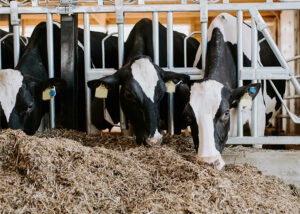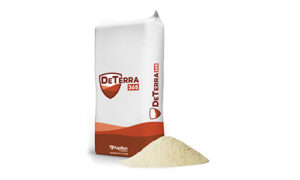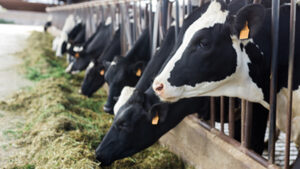This summer has been a scorcher. Record-breaking temperatures have plagued areas of the Pacific Northwest, Midwest, and Northeast. This, coupled with the fact that dairy cows begin to experience heat stress at a temperature-humidity index (THI) of just 72 (i.e. 75°F with 65% humidity), means that most in our industry are battling to maintain animal health and production performance. One often overlooked strategy for improving a cow’s response to heat stress is to feed a high-quality probiotic.
Nutritional benefits of probiotics for heat stress
Research shows several probiotic bacteria, or combinations of bacteria, support increased total tract organic matter, neutral detergent fiber (NDF), starch, and fat digestibility. Improved nutrient digestibility, in turn, leads to many potential benefits:
1. More energy from feed.
Papillon’s probiotic Dairyman’s Edge® CORE has repeatedly improved total tract NDF digestibility by 5.51% units and starch digestibility by 2.75% units. According to the NRC (2001), for every 1% unit increase in NDF and starch digestibility, dietary NeL content increases by approximately 0.24 and 0.30 Mcal/lb, respectively. Cows can partition this energy towards milk production, body condition, reproduction, immune function, or wherever there is a need.
2. Reduced metabolic heat.
Digesting and fermenting feed creates heat— something a heat stressed animal does not need more of. Probiotics improve feed digestibility and rumen efficiency so cows can reduce digestion time and still obtain the nutrients they need. Optimizing digestibility also decreases feed fermentation time, which further reduces the metabolic heat load on the cow.
3. Improved production performance.
Many herds experience seasonal milk fat depression. Research presented at the 2021 ADSA Annual Meeting (Oyebade et al.) suggested that probiotics containing Bacillus subtilis and Bacillus licheniformis improved dietary fat digestibility resulting in increased milk fat yield and 3.5% FCM. Field trial evaluations of Dairyman’s Edge CORE (which includes these two probiotic bacteria) demonstrate improvements in milk fat yield, milk fat percent, and ECM during times of heat stress.
Health benefits of probiotics for heat stress
Reduced dry matter intake (DMI) accounts for only 50% of production losses due to heat stress; the other half of the story involves gastrointestinal (GI) health. During heat stress, the body dissipates heat by shunting blood towards the extremities. When this occurs, blood vessels under the skin dilate while blood vessels in the GI tract constrict to maintain blood pressure. This mechanism starves the GI tissues for oxygen which can damage intestinal cells and cause leaky gut (Figure 1).
Figure 1
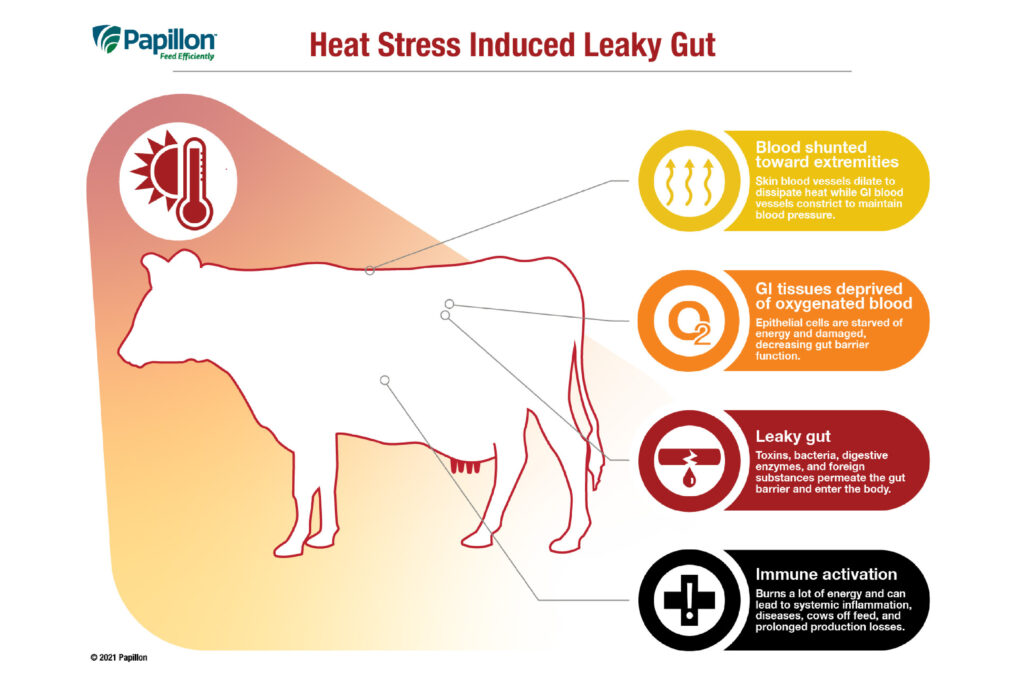
Researchers, including Lance Baumgard (2013), have found that damaged intestinal cells allow toxins, bacteria, digestive enzymes, and other foreign substances to permeate the gut and “leak” into the body (Figure 2). This activates the immune system as the body attempts to fight off the foreign substances entering it.
Figure 2
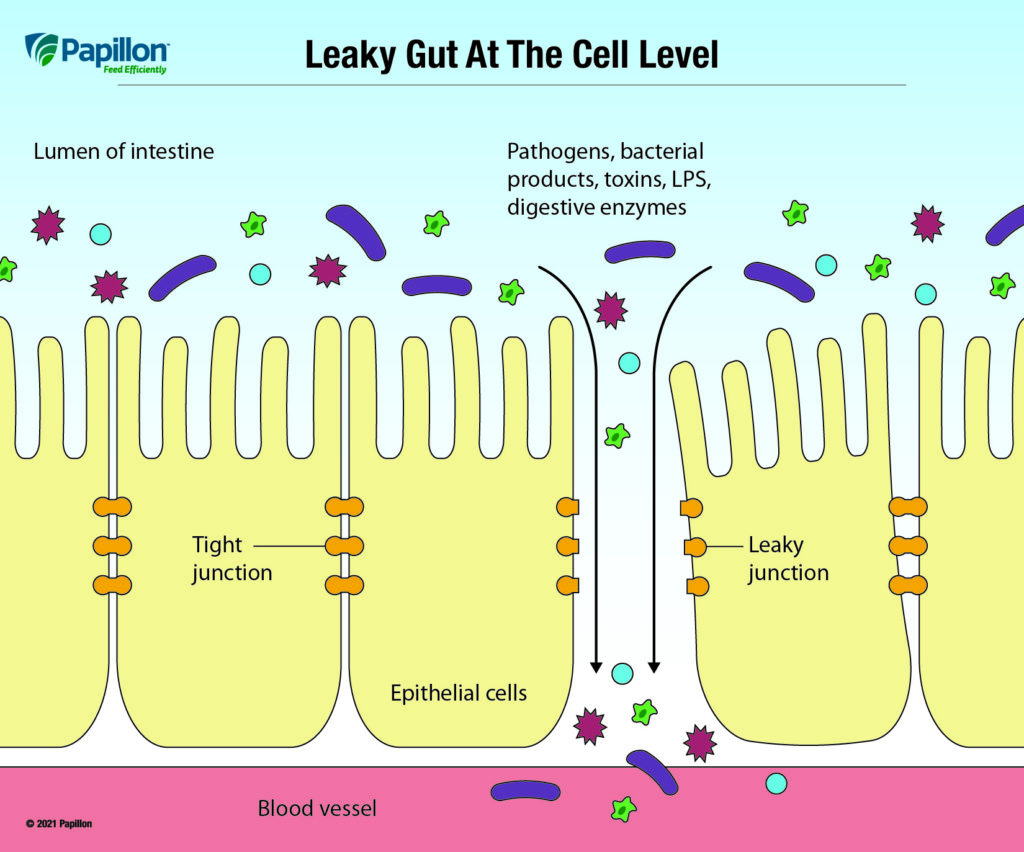
Immune activation is energetically expensive; simply activating the immune system can use 2.2 lbs of glucose per day (Kvidera et al., 2017), while a more severe infectious challenge can use more than 4.4 lbs of glucose per day (Baumgard and others). For perspective, a 4.4 lb increase in glucose demand would require approximately 10 lbs of DMI for the cow to maintain production. If the cow does not maintain or increase intake to offset this need, that same amount of glucose used for activating the immune system would equate to a loss of approximately 25 lbs of milk.
So how can probiotics help? The single layer of intestinal cells lining the GI tract serves as the cow’s first line of defense against pathogens. Maintaining the integrity of the tight junction proteins that hold these cells together is critical for reducing the risk of leaky gut during heat stress.
The probiotic bacterial pack in the Dairyman’s Edge line strengthens tight junctions and reduces intestinal permeability. In an in vitro assay that measures the movement of particles across a cell layer, the probiotic bacteria in Dairyman’s Edge reduced the percentage of particles “leaking” through the cell layer during a challenge with pathogenic E. coli (Figure 3).
Figure 3
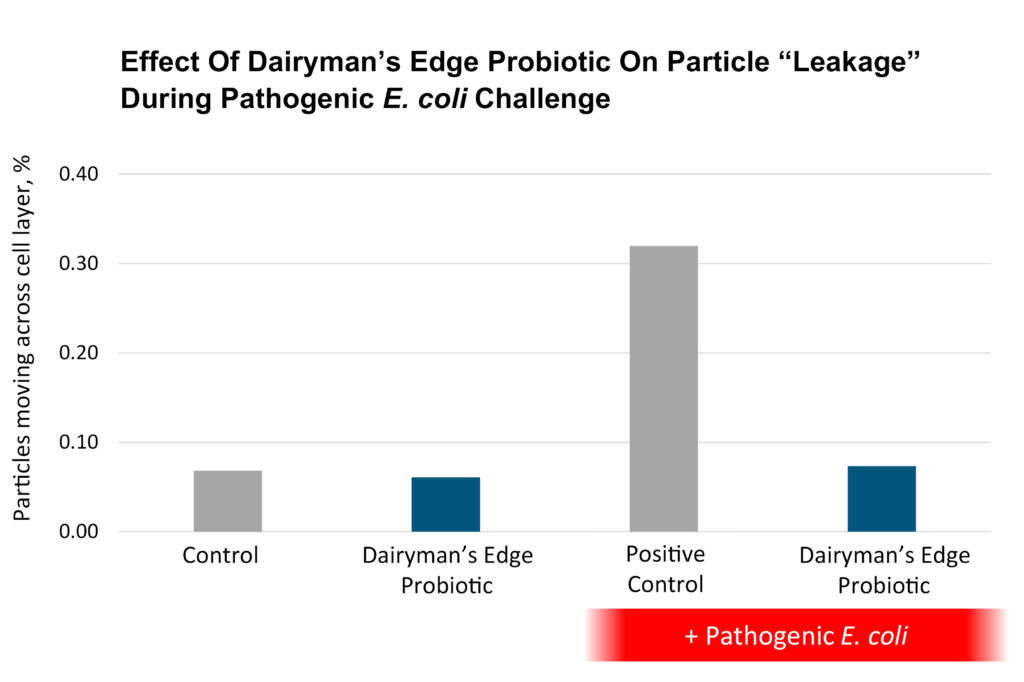
Add probiotics to your lineup
High-quality probiotics are a cost-effective strategy for combating heat stress in dairy herds. While the benefits of probiotic bacteria extend year-round, they give cows an extra leg-up during the dog days of summer and can improve digestibility, production, and fat test. Couple these things with improvements in GI health and immune function, and probiotics should be a mainstay in all dairy cow diets.
To learn more about the Dairyman’s Edge product line, click here.
References
Baumgard, L H & Rhoads Jr R P. 2013. Effects of Heat Stress on Postabsorptive Metabolism and Energetics. Annual Review of Animal Biosciences. 1:311-337.
Kvidera S K, Horst E A, Abuajamieh M, Mayorga E J, Sanz Fernandez M V, & Baumgard L H. 2017. Glucose requirements of an activated immune system in lactating Holstein cows. J. Dairy Sci. 100:2360-2374.
National Research Council. 2001. Nutrient Requirement of Dairy Cattle. 7th rev. ed. Nat. Acad. Sci., Washington, DC.
Oyebade A, Lee S, Arriola K, Sultana H, Duvalsaint E, Amaro F, Marenchino I F, Nino De Guzman C, Pacheco L M, Mu L, Guan H, de Almeida K V, Ghizzi L G, Adesogan A, & Vyas D. 2021. Effects of probiotics supplementation on production performance of early-lactation dairy cows. ADSA 2021. (Abstract).

